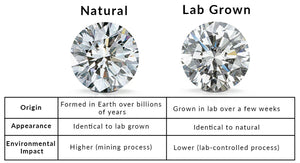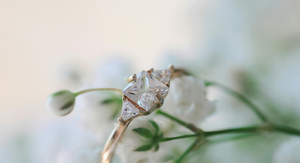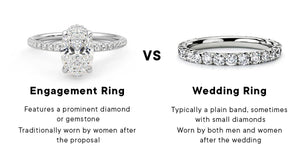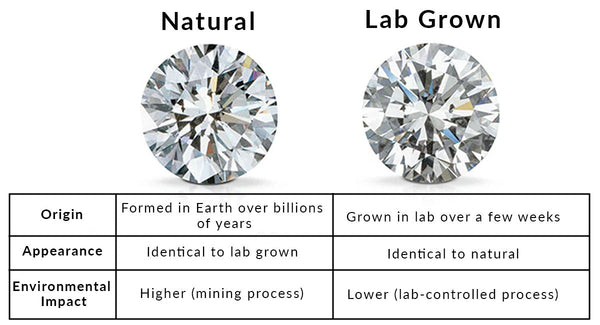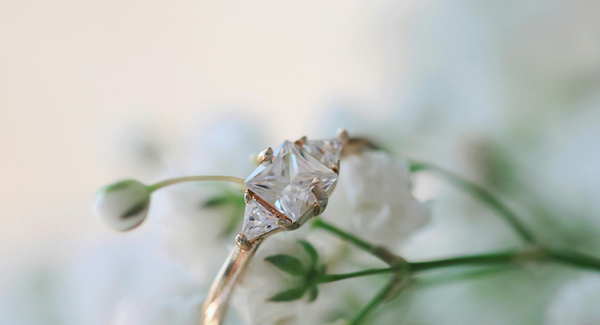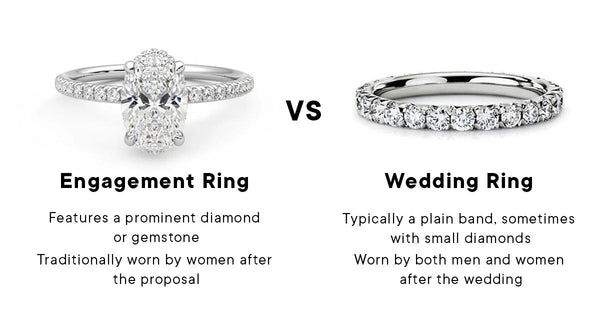Choosing an engagement ring is a significant milestone in one’s life. It’s not just a piece of jewelry; it’s a symbol of love, commitment, and a promise for the future. One crucial decision early in the ring-search journey is determining the right metal. This decision isn’t just about looks – it involves the ring’s design, the stones it cradles, and the lifestyle of the person who’ll wear it.
Let’s dive in to help you navigate the world of metals and find the perfect match for your engagement ring.
Overview of the Growing Trend in Lab-Grown Diamonds and Natural Diamonds
In recent years, a notable shift has occurred in the diamond industry. Young couples are reconsidering traditional, mined diamonds due to their environmental and humanitarian costs. Lab-grown diamonds have emerged as a compelling alternative. They possess the same chemical, physical, and optical characteristics as mined diamonds. While natural diamonds form deep within the Earth’s mantle over billions of years, lab-grown diamonds are created in a lab by humans. Two primary methods, High-Pressure High Temperature (HPHT) and Chemical Vapor Deposition (CVD), have revolutionized the production of lab diamonds.
Understanding the Distinction Between Lab-Grown Diamonds and Natural Diamonds
To make an informed choice between lab-grown and natural diamonds, it’s crucial to understand the distinctions between the two. From their characteristics and composition to their properties, rarity, and environmental impact, let’s explore the factors that set these diamonds apart.
Characteristics and Composition of Lab-Grown Diamonds
Lab-grown diamonds share identical properties with mined diamonds, making them indistinguishable to the naked eye. The key difference lies in their origin. These diamonds are created in controlled environments using two primary methods: High Pressure High Temperature (HPHT) and Chemical Vapor Deposition (CVD).
High-Pressure High Temperature (HPHT)
In the HPHT growth method, carbon is exposed to extreme pressure and temperature, mimicking the conditions under which natural diamonds form deep within the earth. This process results in the growth of a diamond that is chemically, physically, and optically identical to its mined counterpart.
Chemical Vapor Deposition (CVD)
The CVD method involves placing a diamond seed in a sealed chamber filled with carbon-rich gas. The seed attracts carbon atoms, gradually growing layer by layer. This meticulous process yields diamonds with the same composition as those found in nature.
Recent technological advancements have elevated the quality of lab-grown diamonds. These diamonds now exhibit enhanced brilliance and purity, rivaling natural diamonds.
Properties and Rarity of Natural Diamonds
Natural diamonds, formed over billions of years in the Earth’s mantle, possess unique properties that contribute to their enduring appeal.
-
Geological Formation – Natural diamonds are created under immense pressure and heat, 100 miles below the Earth’s surface. The process occurs over an extended period, usually between 1 billion and 3 billion years ago. This geological journey adds to the mystique and allure of natural diamonds.
-
Rarity – While natural diamonds, as a whole, are not scarce, the availability of gem-quality diamond rough is comparatively less common. The intricate conditions required for the formation of diamonds of exceptional quality contribute to their scarcity. It’s the rarity of these high-quality gems that enhances their perceived value and transforms them into symbols of enduring love and commitment. The geological dance that yields gem-quality diamonds is a rare spectacle, and it is this scarcity factor that elevates them to objects of extraordinary desirability.
Exploring Natural Colored Diamonds for Engagement Rings
While white diamonds have long been the standard for engagement rings, the allure of natural-colored diamonds is gaining traction. These diamonds, with their vibrant hues, offer a distinctive and personalized touch. Let’s explore the types and rarity of natural colored diamonds, providing a colorful alternative for those seeking a unique expression of love.
Types and Rarity of Natural Colored Diamonds
Natural-colored diamonds come in a captivating array of hues, from soft pastels to intense shades. The rarity of these colors is influenced by factors such as intensity and purity. Pink, blue, green, and yellow are among the most sought-after colors. Understanding the rarity of each color category allows for a more informed choice in creating a one-of-a-kind engagement ring.
Choosing the Right Metal for Your Engagement Ring
The metal of an engagement ring is more than a decorative choice; it’s a reflection of personal style, durability, and maintenance preferences. Let’s delve into the characteristics of popular metals, including platinum and gold, to guide you in making the right choice for your engagement ring.
Platinum
Platinum, a naturally white and durable metal, has been a favorite for accentuating the brilliance of white diamonds. Its cool luster, intense durability, and natural strength make it ideal for an active lifestyle. Unlike some metals, platinum does not require plating and maintains its color over time.
Gold
Gold, with its timeless appeal and versatility, remains a popular choice for engagement rings. Yellow gold, rose gold, and white gold offer diverse options, catering to different tastes and styles.
Rose Gold
For a softer and more romantic look, rose gold, achieved by combining yellow gold with copper alloys, is an excellent option.
White Gold
First patented in 1917, white gold reveals a brilliant silvery hue achieved by plating yellow gold with rhodium. A rhodium plating enhances its white appearance, but periodic re-plating is necessary. This meticulous process imparts a stunning and enduring luster to the precious metal, making white gold a timeless and captivating choice in jewelry design.
Factors to Consider When Selecting the Metal for Your Engagement Ring
Choosing the metal for your engagement ring involves considering various factors. The wearer’s personal style, skin tone, and lifestyle are crucial in determining the most suitable metal. Additionally, factors such as durability, maintenance, and budget should guide the decision-making process. Thoughtful consideration ensures that the chosen metal aligns seamlessly with the wearer’s preferences and practical needs.
Conclusion
In the grand adventure of choosing the perfect engagement ring, we’ve covered a lot – from the sparkly world of diamonds, both lab-grown and natural, to the sturdy embrace of various metals like platinum and gold. It’s not just about finding a ring; it’s about finding the ring that speaks to your heart and reflects your unique love story, be it a natural or lab-grown diamond ring.
So, what’s the takeaway? Well, beyond the dazzle and shimmer, your choice is a statement. It says something about you, your style, and your values. Maybe you’re drawn to the eco-friendly allure of lab-grown diamonds, or perhaps the timeless elegance of a natural diamond resonates with you. The metal? Oh, that’s like the setting for your love story – platinum for durability, gold for classic charm, or maybe even silver for its understated grace.
But here’s the beauty of it all: there’s no one-size-fits-all in this journey. It’s about what feels right for you and your soon-to-be life partner. It’s personal. It’s meaningful. It’s your love, captured in a circle of metal and sparkle.
And when you look at that ring – whether it’s platinum, gold, or holding a lab-grown gem – let it tell your story. The story of love, of choices, and of a forever kind of commitment. Because in the end, it’s not just a ring; it’s a love story captured in metal and stone, ready to be worn, cherished, and celebrated for a lifetime. Happy ring hunting! 💍❤️



